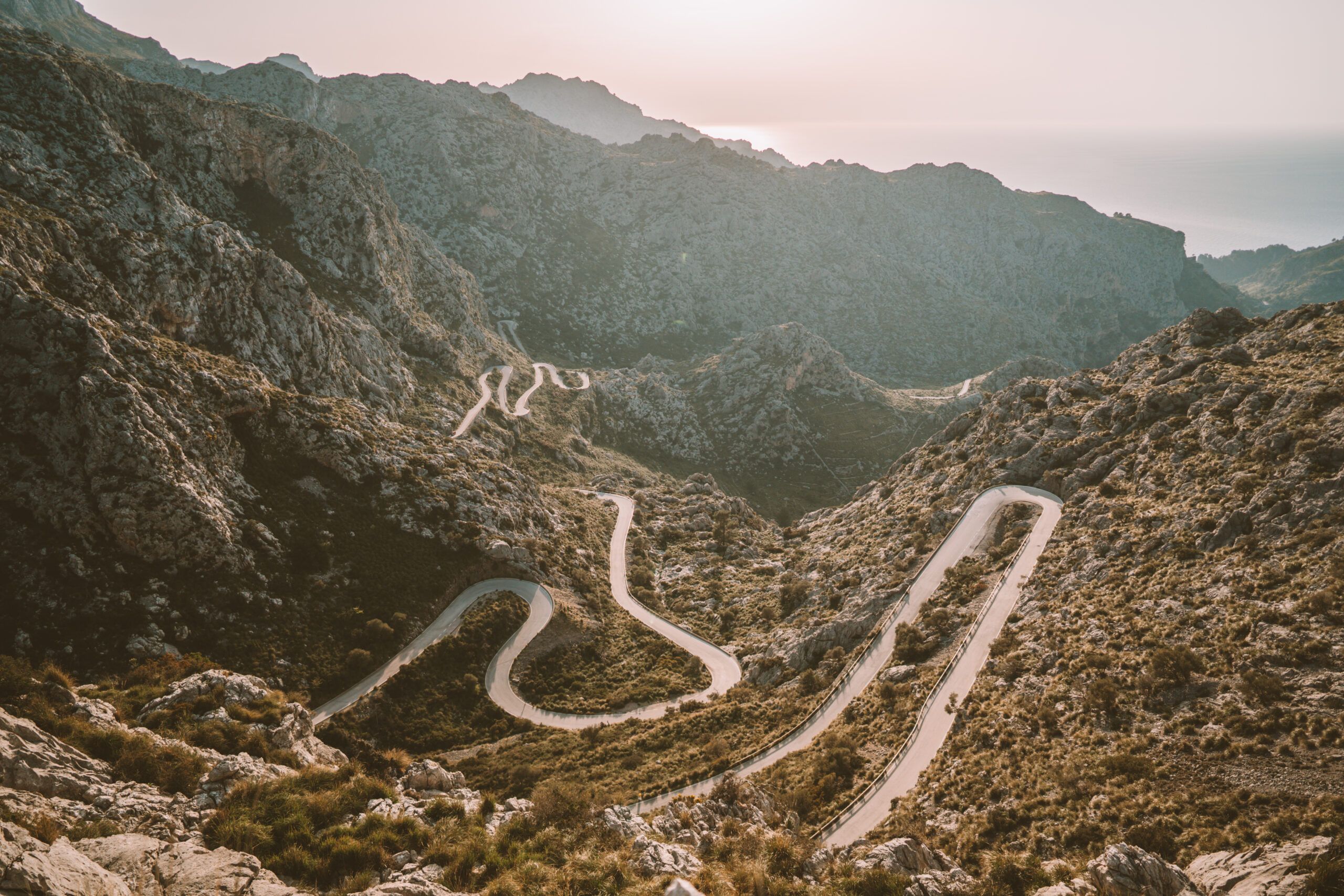
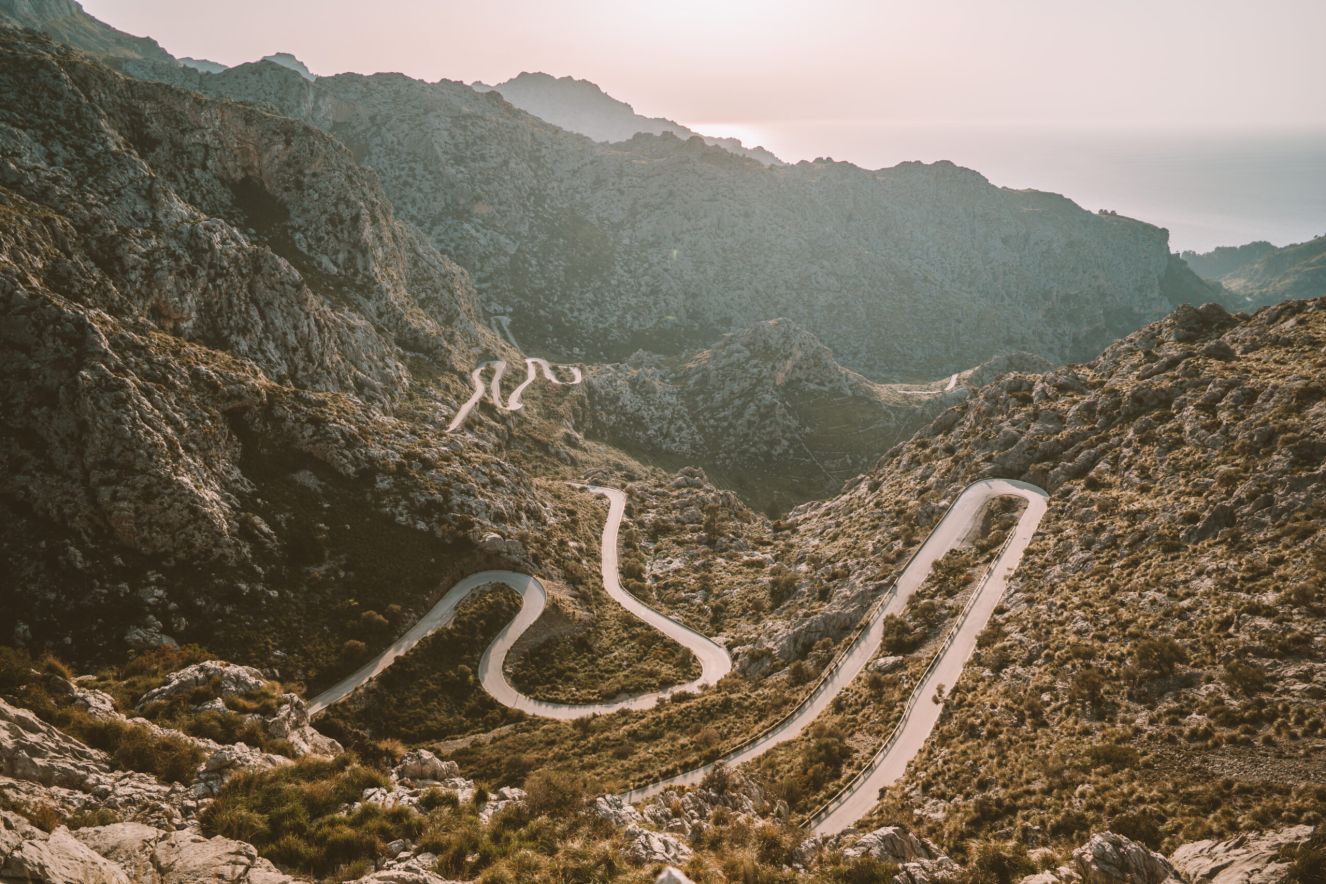
Sa Calobra, Beyond the Hairpins
The road to Sa Calobra is more than a feat of engineering — it’s a performance. Every curve of the MA-2141, known as Coll dels Reis, unfolds like a choreography of stone and speed, a 9.5-kilometre descent carved into the bones of the Tramuntana. Designed by engineer Antonio Parietti in the 1930s, the serpentine route drops from 682 meters above sea level through 26 dizzying bends, including its legendary 270-degree “knot.”
It’s a road that has become a rite of passage for cyclists, motorists, and dreamers chasing the island’s most cinematic drive — and a celebrated stage of the Rally Clásico Mallorca, where vintage engines echo off the cliffs each spring, turning the descent into a symphony of revs and nostalgia.
But beyond the hairpins lies a quieter story — one that begins when the engines cool and the tour buses fade.
The quiet hours, safety tips, and lesser-known photo spots that cyclists and drivers often miss.
If you want to feel the road rather than fight for it, go early — very early. At dawn, the Tramuntana still hums softly with the sound of crickets, and the air carries the scent of pine and sea salt—the first light slips between the peaks, painting the limestone walls in hues of coral and gold. Between 7:00 and 9:00 a.m., you might find yourself alone on the descent, the road ribboning below like a secret revealed only to the patient. Late afternoons, just before sunset, also hold a particular hush: the day's heat easing, the cliffs glowing with amber light.
Avoid mid-morning to mid-afternoon when convoys of rental cars and cycling tours dominate the route. Parking at the bottom — near the small port or the entrance to Torrent de Pareis — is scarce, and it’s best to plan your return ascent before the buses begin their climb again.
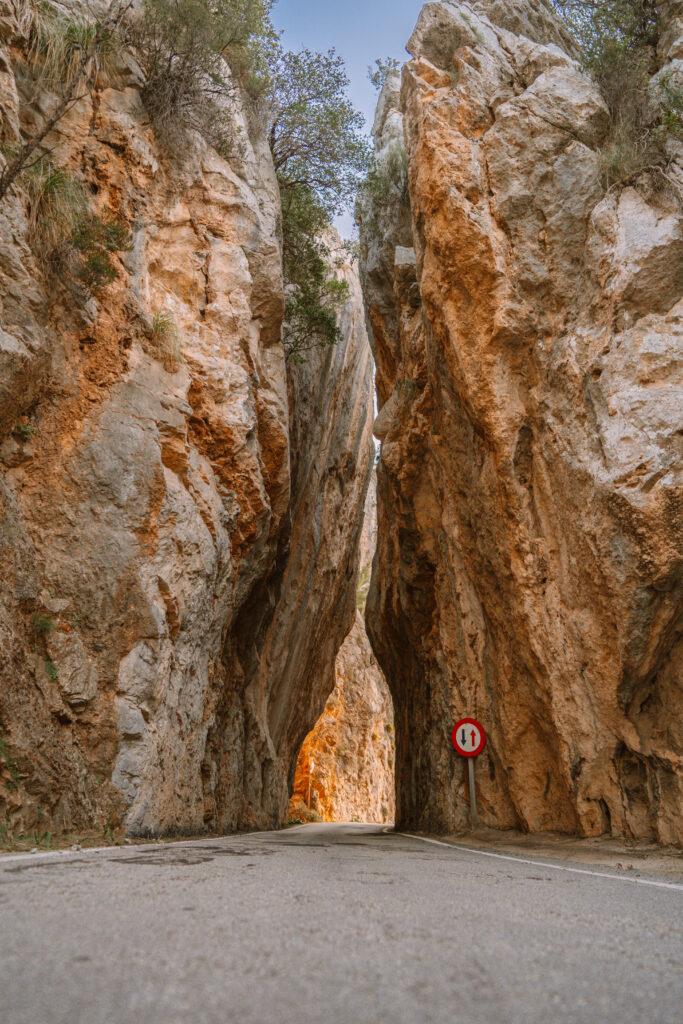
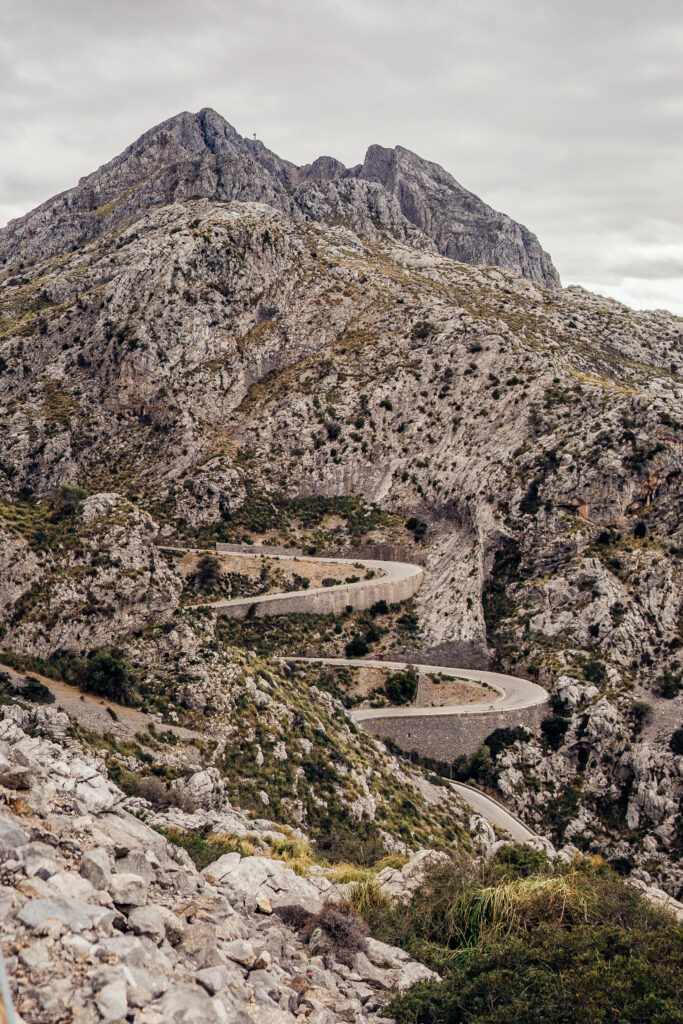
Safety First
Sa Calobra’s beauty comes with sharp edges. Drivers should remember: this is a mountain road, not a racetrack. Many turns have no guardrails, and visibility can drop quickly behind stone walls. Keep speeds low and stay alert for cyclists, who often descend faster than cars.
If you're cycling, use lights even in daylight; the shifting shade between rock faces can make you nearly invisible to oncoming traffic. Carry plenty of water and start your ride from Escorca or Lluc rather than the base — it's a climb best enjoyed in the cool morning hours before the sun turns the asphalt into a mirror.
Hidden Photo Spots
Most visitors stop at the famous knot — the Nus de Sa Corbata — or the final bend overlooking the turquoise cove. But a few quieter spots reward those willing to linger. Halfway down, just past kilometer marker 5, a small gravel pull-off offers a panoramic view of the entire serpentine descent, especially dramatic in the early morning mist.
At the bottom, skip the main promenade and take the short stone tunnel that leads to Torrent de Pareis. Emerging from the shadow, you’ll see one of Mallorca’s most extraordinary views: twin cliffs framing a pebbled beach where a mountain river meets the sea. It’s a place where sound slows — waves echoing off stone, the air filled with salt and reverence.
Beyond the Drive
If you linger past noon, Sa Calobra becomes a different world. The cafes stir awake, serving espresso to sunburned cyclists and lemon granitas to families fresh from the beach. Local fishermen mend nets by the small jetty, and the water, clear as glass, invites a cooling swim.
Yet even then, it's the early and late hours that linger longest in memory — when the light, the silence, and the scale of the landscape remind you why Mallorca's mountains were declared a UNESCO World Heritage Site. Sa Calobra is not just a destination; it's a dialogue between human ambition and nature's enduring calm.

Nus de Sa Corbata
Carved into the cliffs of the Tramuntana, Nus de sa Corbata — “the tie knot” — is more than a road; it’s an experience. The serpentine drive twists through 26 hairpins, revealing glimpses of sea and mountain at every turn. Designed in the 1930s, it remains one of Mallorca’s most iconic routes — a challenge for drivers, a pilgrimage for cyclists.
Narrow, steep, and often crowded with cars and bikes, it demands patience and focus. The cautious pace, however, is part of its reward: the views unfold slowly, like a moving postcard. Stop at Mirador des Barques or the Nus itself for sweeping panoramas before descending to Sa Calobra beach, where turquoise water meets the dramatic mouth of Torrent de Pareis.
Thrilling, scenic, and unforgettable — Nus de sa Corbata is where Mallorca’s engineering genius meets raw natural beauty.
Author
-

The Best of Mallorca team is made up of people who are in love with Mallorca, each with unique experiences and insights to share with you. From adventure, to gastronomy and lifestyle their hobbies and interests range far and wide. They are passionate about turning your time in Mallorca into meaningful memories and bringing you inspiring ideas to enjoy this beautiful island.
View all posts
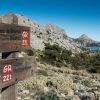

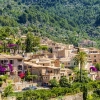
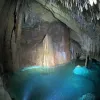










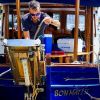
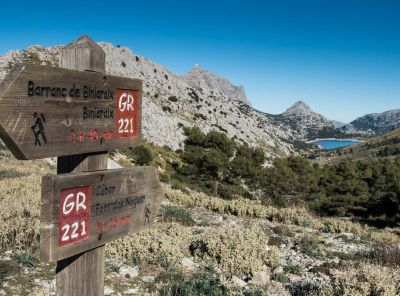
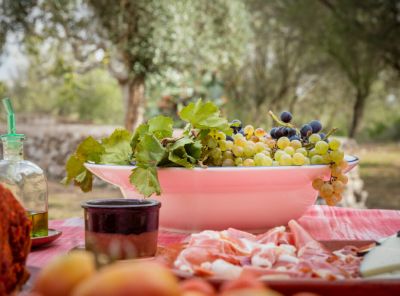
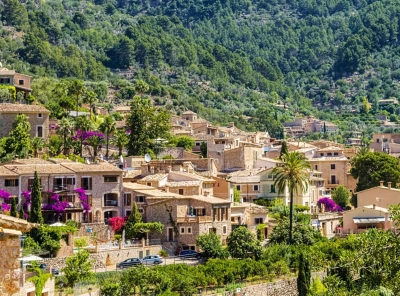
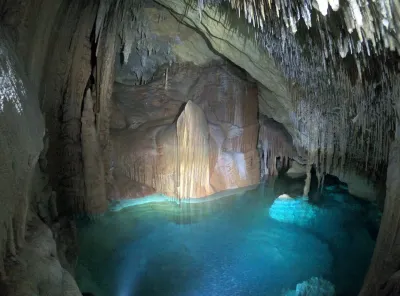
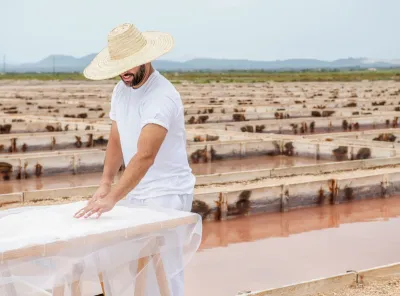
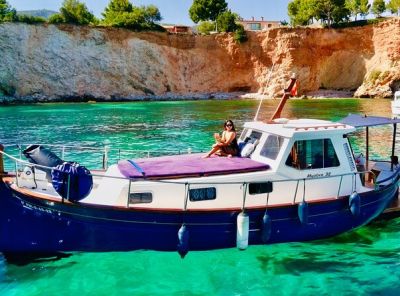

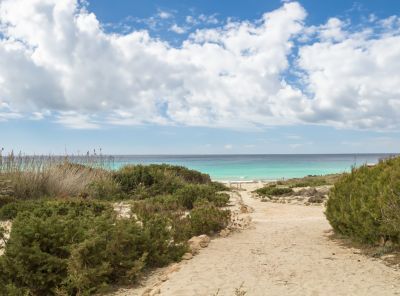
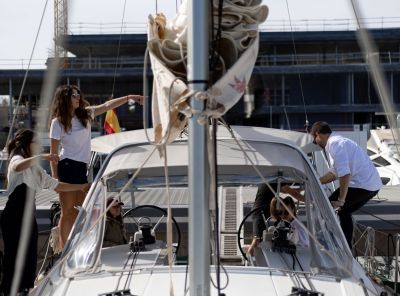
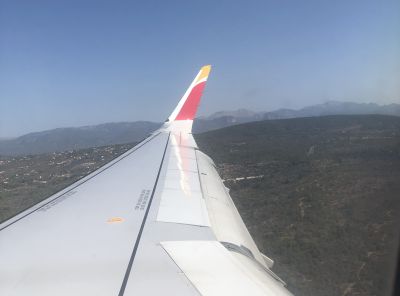
Leave a Reply